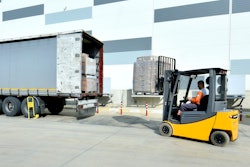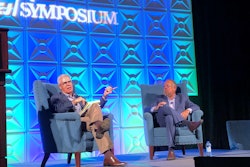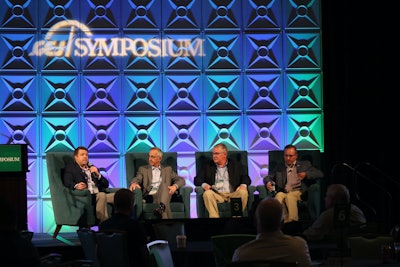
Most people over the age of 40 remember a time when cell phones were not prevalent.
“In retrospect, it didn’t seem like that long ago,” said Darren Epps, Aug. 10, at the CCJ Symposium in Birmingham, Alabama. One day, the trucking industry will remember the time when battery electric vehicles (BEVs), hydrogen powertrains and renewable fuels were entering the market. That time is now.
The transition to alternative powertrains and fuels “is not going to happen overnight,” said Epps, senior director of advanced vehicle technology at Ryder System, "but it definitely is coming.”
Nearly every truck OEM now has an electric or fuel cell vehicle ready for production, he noted, and the build slots are filling quickly.
Clearing the hurdles
Fleets and OEMs have traditionally been focused on technologies for increasing fuel efficiency — trailer side skirts, wide-base tires, 6x2 drive axles, wheel covers and more. Presenter Mike Roeth noted that interest is starting to shift toward how technologies can increase the range of electric vehicles.
Roeth, executive director of the North American Council for Freight Efficiency (NACFE), said his group has been tracking the adoption and efficacy of numerous technologies for more than 10 years in its Confidence Reports. NACFE is currently gathering data and holding “Run on Less” events from 13 participating fleets that have deployed fully electric Class 4-8 vehicles.
NACFE has issued Guidance Reports that show arguments for and against BEVs. The range of an electric truck is about 250 miles, on average, which makes them adequate for local and some regional applications. The added weight of 2,000 to 4,000 pounds is a factor, but electrics have a weight exemption to keep their payload on par with conventional tractors, Roeth said.
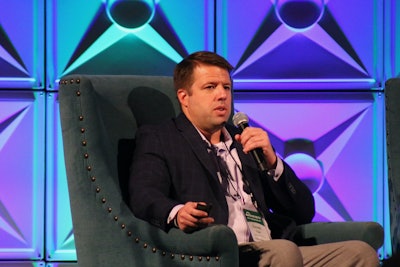 Darren Epps, senior director of advanced vehicle technology at Ryder System.
Darren Epps, senior director of advanced vehicle technology at Ryder System.
“Truck stops will have to figure out parking and in-motion charging,” he said.
Panelist Mike McDonald, director of maintenance at Benore Logistics, said the infrastructure problem for his company was solved when the largest customer for the Greer, S.C.-based fleet installed chargers at its automobile manufacturing plant.
Benore operates about 550 tractors and 2,100 trailers. It recently completed testing of a Peterbilt 579 electric vehicle with a 6x4 axle configuration and an 80,000 GCWR. It also tested fully electric yard jockeys from Orange EV.
Benore purchased a new Peterbilt 579 electric and is currently in negotiations with Orange EV to purchase yard jockeys.
Driver acceptance and feedback from both trucks were overwhelmingly positive, he said.
Ryder is currently testing electric yard tractors and has deployed two all-electric Workhorse trucks in its COOP share/rental marketplace for fleets, which he described as the “Airbnb of trucks.”
Ryder and other early adopters of BEVs have little data on what the maintenance cost savings will be. Early experience shows brakes are lasting longer, Epps said, because of regenerative braking systems. In theory, fewer things can go wrong with electric powertrains since they have 90% fewer parts than diesel. The battery management system is the X factor.
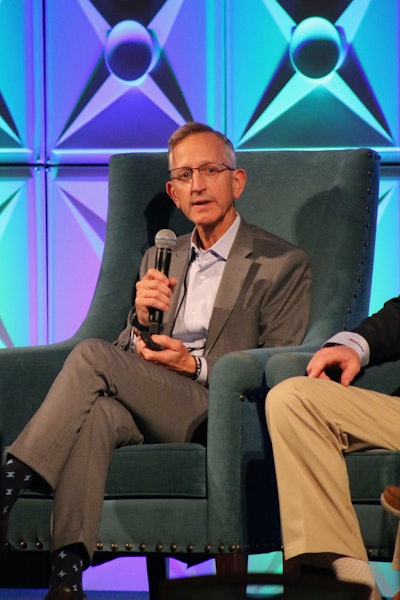 Keith Wilson, president and CEO of Titan Freight.
Keith Wilson, president and CEO of Titan Freight.
Hydrogen fuel cells are another zero-emissions alternative. Epps predicted they will be a viable option by the end of the decade to significantly extend the range of battery-powered trucks.
Bridging the gap
While waiting for zero emission trucks to become a more viable option, Titan Freight is moving full speed ahead with renewable diesel (RD). Titan is a Portland, Oregon-based less-than-truckload carrier that operates out of seven service centers in the Northeast.
Panelist Keith Wilson, president and CEO of Titan Freight, said the company has tried many different fuel-saving technologies but in April 2021 switched to using RD to cut costs and emissions.
Titan Freight has ordered six electric Freightliner trucks, but they will not be produced until 2023 at the earliest, Wilson said.
Since it began using RD, which Titan purchases in bulk for terminal fueling, the company has seen a 1.4 cent-per-mile reduction in exhaust system maintenance from the clean-burning fuel.
“We haven’t had to change one DPF,” he said. Oil costs are down as well from less soot entering the crankcase. Overall, the company has saved 1.9 cents per mile. After running RD for one million miles, total savings have been $19,000 and its carbon reduction has been 1,294 metric tons.
RD is refined from soy and other bio feed stock and reduces carbon emissions by 69% and the amount of soot in the engine by 30%, he said.
Oregon has a low carbon fuel subsidy (LCFS) that works by adding about 5 cents per gallon to diesel prices. Because of that subsidy, carriers in Oregon can buy RD at same price as petrol diesel, where it is available. RD fuel gets the same mpg as petroleum diesel by having the same chemical composition.
“In trucking it is hard to find a silver bullet, but we believe we’ve found it,” Wilson said.




